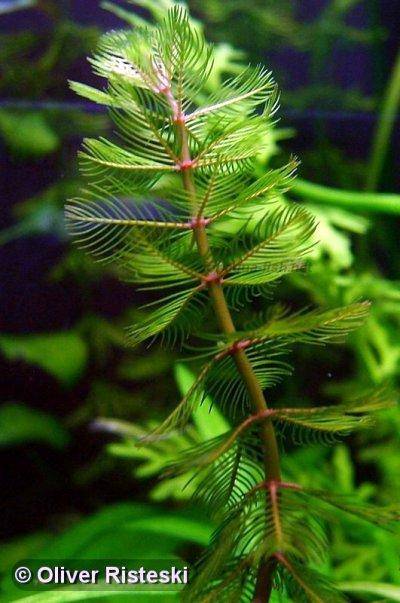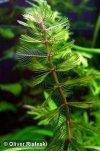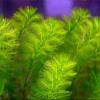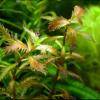Myriophyllum spicatum
Scientific name: Myriophyllum spicatum
Family: Haloragaceae
Maximum size reached under cultivation: 20 - 70 cm (7.87 - 27.56 inch)
014
Recommended pH range: 6.3 - 7.7
Recommended water hardness: 5 - 23°dGH (89.29 - 410.71ppm)
0°C 32°F30°C 86°F
Recommended temperature range: 20 - 27 °C (68 - 80.6°F)
Preferred propagation method: Cuttings
Native to: Europe
Growth rate: Normal
Recommended substrate: Fine gravel
Lighting requirements: Medium
Ideal placement in tank: Background
Family
Haloragaceae
Common Name
Spiked Water Milfoil
Origin
Myriophyllum spicatum originates from Eurasia, including Europe, parts of Asia, and northern Africa. It naturally grows in lakes, ponds, reservoirs, and slow-moving rivers. Due to its adaptability and rapid vegetative reproduction, it has become an invasive species in many other regions, especially North America, where it displaces native aquatic vegetation.
Growing Conditions
Myriophyllum spicatum grows best when fully submerged in water. It develops finely divided, feather-like leaves that form bushy, elegant whorls along the stem. In shallow ponds and wetlands, the plant may occasionally break the surface and produce small, reddish flowers, but it rarely grows emersed in aquariums.
This species prefers medium lighting and does well in nutrient-rich aquariums with a temperature range of 20 – 27 °C (68 – 80.6°F). It tolerates a wide pH range between 6.3 and 7.7 and water hardness from 5 to 23 dGH. Although CO2 injection is not required, it can promote faster growth and denser foliage.
Planting Area
With a potential height of up to 70 cm (27.56 inches), Myriophyllum spicatum is ideal for the background of larger aquariums or for natural pond setups. It provides excellent shelter for small fish and fry and can also serve as a spawning area for some species. Regular trimming is advised, as it can grow quickly and overshadow other plants if left unchecked.
Propagation
Myriophyllum spicatum propagates easily through cuttings. Cut a healthy stem segment and remove the bottom leaves to expose a clean stem section. Carefully insert the cutting into fine gravel substrate. New roots will develop quickly, and the cutting will establish itself as an independent plant.
In the wild, this species also reproduces vegetatively by fragmentation — broken pieces float away, settle elsewhere, and grow into new plants. This trait contributes to its invasive nature.
Difficulty
Myriophyllum spicatum is considered easy to care for. Its adaptability to various water conditions and tolerance of medium lighting make it suitable for both beginner and experienced aquarists. However, its rapid growth and tendency to take over tanks or ponds require regular maintenance.
Short Description
Myriophyllum spicatum, also known as Spiked Water Milfoil or Eurasian Watermilfoil, is a fast-growing submerged plant appreciated for its soft, bushy appearance. It is excellent for creating a natural-looking aquascape and providing shelter for fry. Its feather-like leaves form beautiful green plumes that sway gently with water flow. Because of its vigorous growth and ability to spread via cuttings or fragments, it must be pruned regularly and disposed of responsibly to prevent unwanted spread — especially in outdoor ponds, where it can become invasive.
This plant is suitable for both aquariums and garden ponds. Use a tightly secured lid or netting in open tanks, as floating fragments may clog filters or spread unintentionally.
Image was provided by Oliver.


 Myriophyllum aquaticum
Myriophyllum aquaticum Myriophyllum hippuroides
Myriophyllum hippuroides Proserpinaca palustris
Proserpinaca palustris